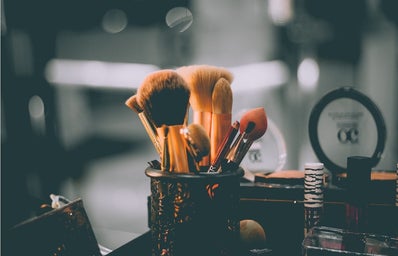Nowadays, the discussion on “media” beauty versus “real” beauty seems to be ubiquitous. Every advertisement and tabloid photograph is scrutinized and analyzed. The overwhelming conclusion seems to be that TV and magazines portray women in a way that pressures us to lose weight, tighten, tone… you know the deal.
Many of us have heard that Marilyn Monroe, a Golden Age beauty icon, wore what would be a modern day size 8. Based on that, poor Marilyn today would be laughed out of auditions and shunned as “too big” to model. We wonder what changed between then and now. Why are beauty standards more intense nowadays?
As it turns out, they might not be. Yes, they have changed. But there will always be women who fit the popular standard, and those who do not.
The roaring 20s were a critical turning point for American beauty ideals. When flappers began to shed all their extra layers of fabric and fluff, it was harder for them to hide imperfections. Thus, the pursuit of perfection grew more competitive. Before this time, curves were embraced and seen as a true sign of womanliness. However, this ideal was dropped in favor of the slim and boyish look of the 1920s.
Vintage weight-loss ads from the 1930s -1950s pressure women to gain weight. Phrases such as “Skinny girls are not glamour girls” and “Men wouldn’t look at me when I was skinny” appear on the pages of these faded magazine pages. Most of the ads directly focus on how men would prefer women to look a certain way, and how with these products, women could make themselves more glamorous and appealing in order to find the man to improve their life. This era stressed that is was important to be womanly, and boyish figures would not cut it. Hourglass figures and large breasts (yet with a slim waist) became the most desirable look.
By the 60s and 70s, everything changed once again. Like in the 20s, the desire to look “womanly” had reverted to a focus on looking thin and adolescent. This change was due to a counter-culture movement that promoted an innocent look, challenging the societal norms of the previous decades. Natural and ethereal became the new standard. Models began to look different – the waiflike look of Twiggy took over.
The 80s marked the beginning of the “supermodel era” where fashion became over-the-top and flaunty. This went hand in hand with the fitness obsession of the decade – women were expected to be toned, tall, and athletic, but still with large breasts and supermodel curves. A difficult balance, surely. This is arguably the point in history where many would claim beauty standards took a significant turn for the worse, with the media and music industries making it seem more and more important for women to look a certain and generally unachievable way.
The 1990s were a product of the athletic craze of the 80s – now women were obsessed with the idea that “thinner is better”. Models like Kate Moss promoted an uber-thin and Twiggy-esque ideal. Skeletal models began to appear on runways nationwide, and “curvy” became synonymous with overweight.
Due to backlash against popular media for promoting eating disorders, the standard changed slightly beginning in the 2000s. Since then, women have been encouraged to be skinny…but in a “healthy” way. Whether this is actually healthy is harshly debated; just because ribs aren’t showing doesn’t necessarily mean a safe weight for a woman. Large breasts, butts, and the infamous thigh gap became more and more important. Due to medical advances, plastic surgery is a more and more common means to achieve that “perfect” look.
So here we are, feeling less beautiful than the women we see on TV. But has anything really changed? The standard has shifted, but the moral of the story is that there has always been a standard in some form. The quest for the perfect body may be impossible to achieve and sustain. Think about it – if Gisele Bundchen had lived in the 1930s, she would have been regarded as too skinny and boyish to be taken seriously. Joan Crawford would be too short to be considered truly glamourous today. It’s astonishing that society as a whole can decide who is allowed to be attractive. Nowadays, there are efforts to challenge this notion, such as the Dove Campaign for Real Beauty. But we have to wonder – will we ever truly accept all women as beautiful?
Sources:
- http://mentalfloss.com/article/66536/what-dress-size-was-marilyn-monroe-actually
- http://www.studentpulse.com/articles/999/the-desperate-drive-for-perfection-changing-beauty-ideals-and-womens-fashion-in-the-1920s
- https://www.youtube.com/watch?v=Xrp0zJZu0a4
- http://www.huffingtonpost.com/2011/11/29/vintage-weight-gain-ads_n_1119044.html
- http://www.idealiststyle.com/blog/beauty-ideal-over-the-decades-part-5-the-80s
- https://com215.wordpress.com/perception-of-beauty-in-the-1990s/
- https://com215.wordpress.com/perception-of-beauty-in-the-1990s/

